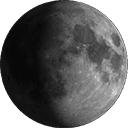Mission: impossible (escape from the Lyman limit)
Author(s): Fernandez-Soto, A; Lanzetta, KM; Chen, HW
Source: MONTHLY NOTICES OF THE ROYAL ASTRONOMICAL SOCIETY Volume: 342 Issue: 4 Pages: 1215-1221 DOI: 10.1046/j.1365-8711.2003.06622.x Published: JUL 11 2003
We investigate the intrinsic opacity of high-redshift galaxies to outgoing ionizing photons using high-quality photometry of a sample of 27 spectroscopically identified galaxies of redshift 1.9 < z < 3.5 in the Hubble Deep Field. Our measurement is based on maximum-likelihood fitting of model galaxy spectral energy distributions – including the effects of intrinsic Lyman-limit absorption and random realizations of intervening Lyman-series and Lyman-limit absorption – to photometry of galaxies from space- and ground-based broad-band images. Our method provides several important advantages over the methods used by previous groups, including most importantly that two-dimensional sky subtraction of faint-galaxy images is more robust than one-dimensional sky subtraction of faint-galaxy spectra. We find at the 3sigmastatistical confidence level that on average no more than 4 per cent of the ionizing photons escape galaxies of redshift 1.9 < z < 3.5. This result is consistent with observations of low- and moderate-redshift galaxies but is in direct contradiction to a recent result based on medium-resolution spectroscopy of high-redshift (z approximate to 3) galaxies. Dividing our sample into subsamples according to luminosity, intrinsic ultraviolet colour and redshift, we find no evidence for selection effects that could explain such a discrepancy. Even when all systematic effects are included, the data could not realistically accommodate any escape fraction value larger than approximate to15 per cent.






